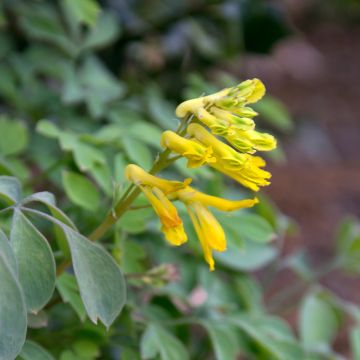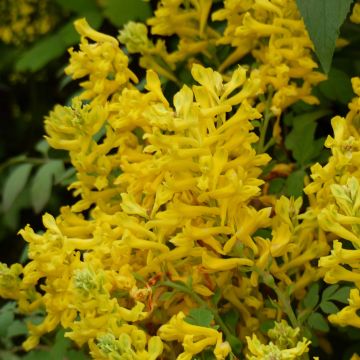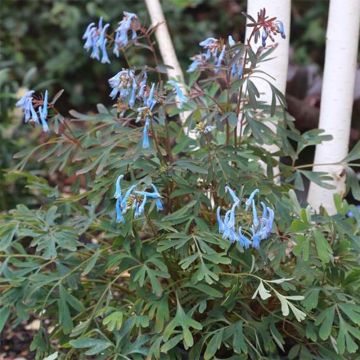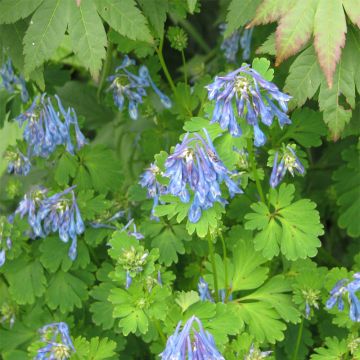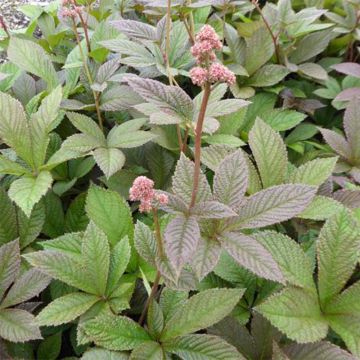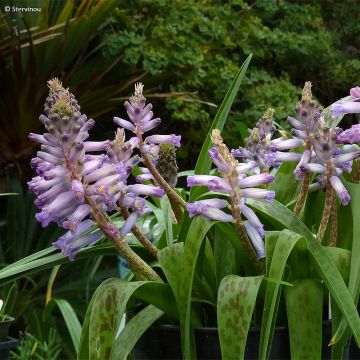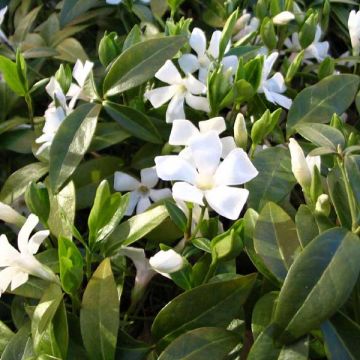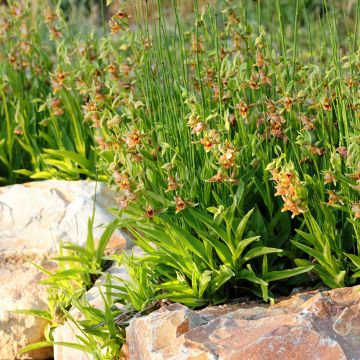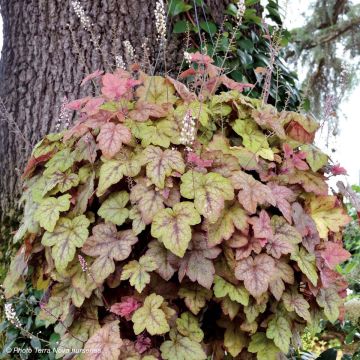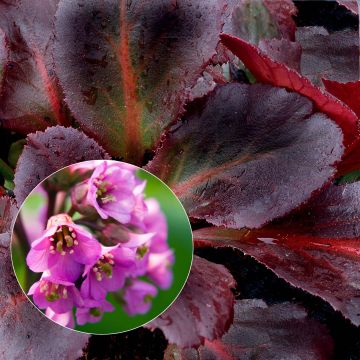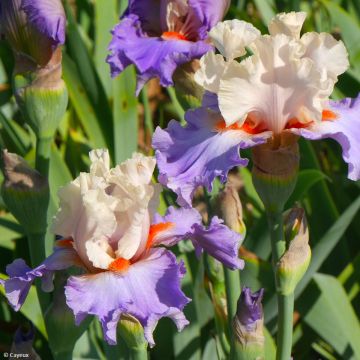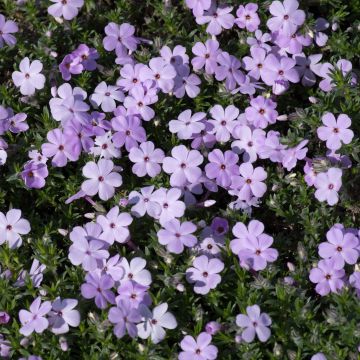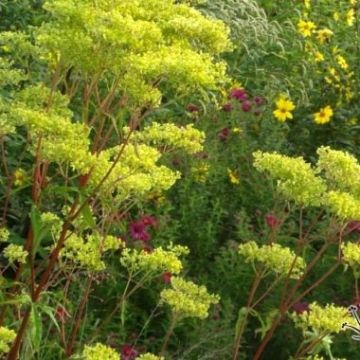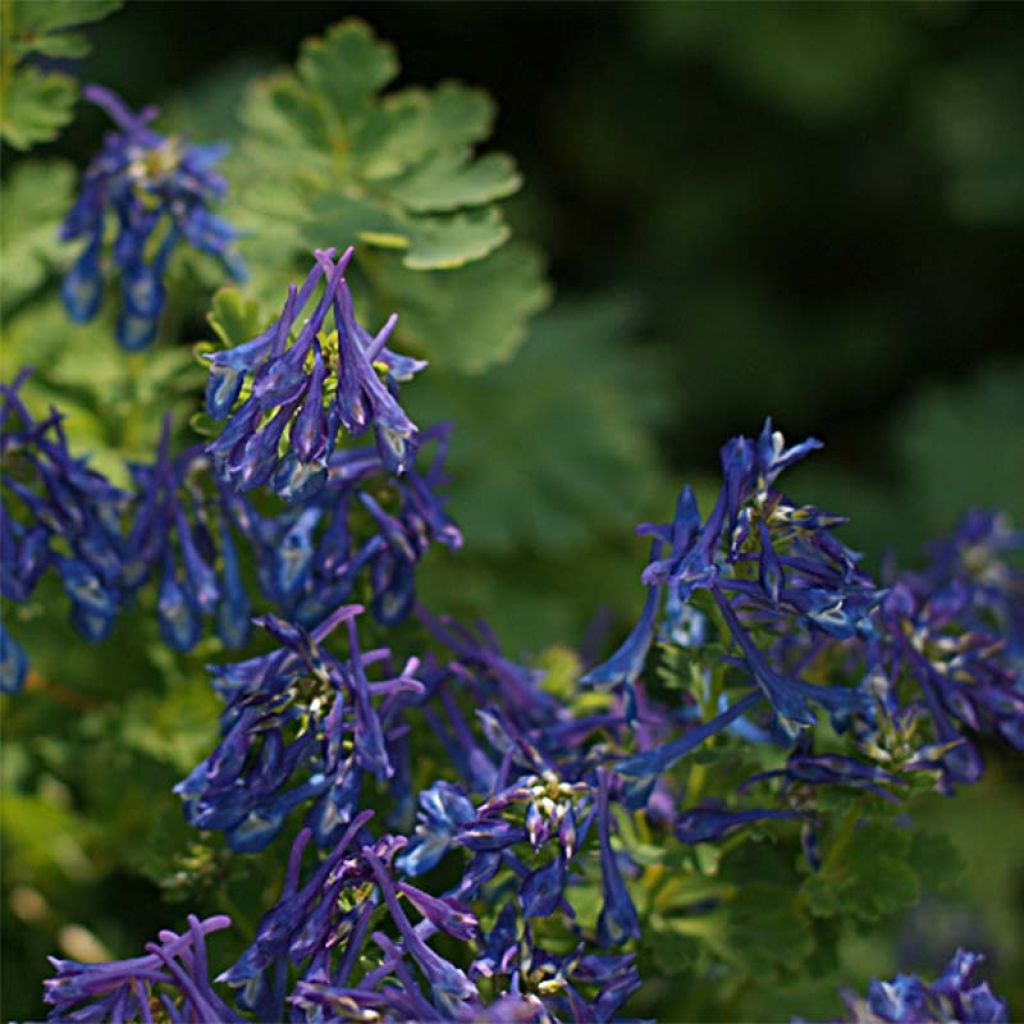

Corydalis elata Blue Summit - Corydale bleu
Corydalis elata Blue Summit
Corydalis elata Blue Summit
Fumewort, Pseudofumaria, Capnoides
This plant carries a 12 months recovery warranty
More information
We guarantee the quality of our plants for a full growing cycle, and will replace at our expense any plant that fails to recover under normal climatic and planting conditions.
From €5.90 for pickup delivery and €6.90 for home delivery
Express home delivery from €8.90.
Does this plant fit my garden?
Set up your Plantfit profile →
Description
The Corydalis elata Blue Summit is a vigorous selection of Corydalis that stands out for its remarkable spring flowering. Its large tubular flowers are of an extraordinary blue, almost electric, illuminated by small white spots. They gather in generous and pleasantly fragrant clusters, dominating a beautiful tuft of finely cut foliage of a fresh spring green. Unlike its cousin Corydalis flexuosa, this excellent variety does not go dormant in summer and maintains its beautiful appearance throughout the summer. Hardy and perennial, this very pretty plant thrives in cool and semi-shaded areas, such as in a light woodland or under the cover of bushes, in a humus-rich and light soil that remains moist throughout the year.
The 'Blue Summit' Corydalis belongs to the Fumariaceae family. It was recently selected by the famous English gardener Elizabeth Strangman from Washfield Nursery, who collected it on Mount Emei (Omei) in the Sichuan province of China. It is a herbaceous plant, perennial by its slightly stoloniferous roots, whose vegetation forms in autumn or spring and more or less disappears in winter, depending on the climatic conditions.
The moderately fast growth of this corydalis will allow it to occupy about 40-45 cm (16-18in) in all directions in two years. This plant forms a compact and dense tuft and can moderately spread as a ground cover thanks to its short stolons. The foliage, carried by reddish stems, takes on a very light and vibrant shade, a somewhat acidic green. Finely cut, it resembles that of fumitories or bleeding hearts. The flowering, made up of fragrant and well-supplied clusters, takes place in May-June. The pendant flowers, resembling long tubes with flared edges, are equipped with a long spur. Each flower, bright and light blue, azure blue according to some observers or cobalt blue according to others, has a few small white areas that give the whole an incredible luminosity and a unique colour.
The 'Blue Summit' Corydalis, perhaps the most spectacular of all, is not the most difficult to grow. However, like all its cousins, it requires specific growing conditions that may not be found in every garden. Its beauty, however, deserves some effort that will allow you to enjoy its undeniable beauty. It will thrive in our rather cool, well-watered regions, in a light woodland or under the cover of bushes, where it can withstand root competition. These are conditions also appreciated by bleeding hearts, Japanese lady ferns, Japanese grass, hostas, or even the rare Isodon longituba that will accompany it, preferably in humus-rich and non-chalky soil.
Report an error about the product description
Corydalis elata Blue Summit in pictures
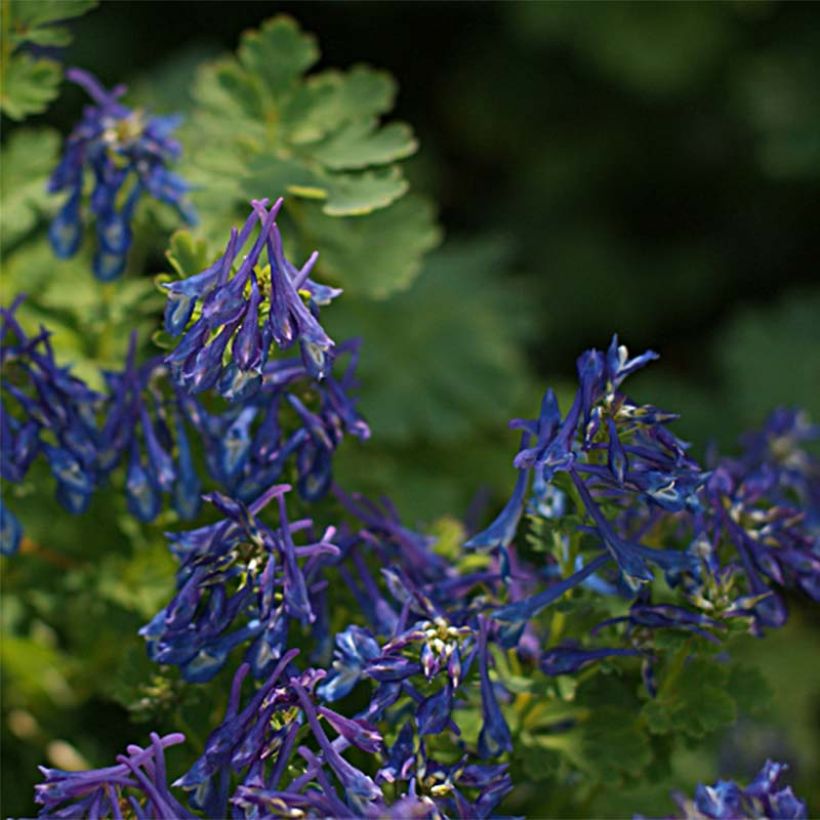

Flowering
Foliage
Plant habit
Botanical data
Corydalis
elata
Blue Summit
Fumariaceae - Papaveraceae
Fumewort, Pseudofumaria, Capnoides
Cultivar or hybrid
Other Corydalis
Planting and care
To help your Corydalis elata Blue Summit plant grow well, choose a soil that is well-drained, rich in humus, and stays moist all year round. This plant is sensitive to heat and needs a temperate, maritime, or mountainous climate. In mild climates, it will keep its leaves during winter, but in harsh winters, it may disappear and then come back in spring. In this case, you can help it by covering it with dead leaves. At the end of winter, remove any dead foliage.
Planting period
Intended location
Care
This item has not been reviewed yet - be the first to leave a review about it.
Spring flowering perennials
Haven't found what you were looking for?
Hardiness is the lowest winter temperature a plant can endure without suffering serious damage or even dying. However, hardiness is affected by location (a sheltered area, such as a patio), protection (winter cover) and soil type (hardiness is improved by well-drained soil).

Photo Sharing Terms & Conditions
In order to encourage gardeners to interact and share their experiences, Promesse de fleurs offers various media enabling content to be uploaded onto its Site - in particular via the ‘Photo sharing’ module.
The User agrees to refrain from:
- Posting any content that is illegal, prejudicial, insulting, racist, inciteful to hatred, revisionist, contrary to public decency, that infringes on privacy or on the privacy rights of third parties, in particular the publicity rights of persons and goods, intellectual property rights, or the right to privacy.
- Submitting content on behalf of a third party;
- Impersonate the identity of a third party and/or publish any personal information about a third party;
In general, the User undertakes to refrain from any unethical behaviour.
All Content (in particular text, comments, files, images, photos, videos, creative works, etc.), which may be subject to property or intellectual property rights, image or other private rights, shall remain the property of the User, subject to the limited rights granted by the terms of the licence granted by Promesse de fleurs as stated below. Users are at liberty to publish or not to publish such Content on the Site, notably via the ‘Photo Sharing’ facility, and accept that this Content shall be made public and freely accessible, notably on the Internet.
Users further acknowledge, undertake to have ,and guarantee that they hold all necessary rights and permissions to publish such material on the Site, in particular with regard to the legislation in force pertaining to any privacy, property, intellectual property, image, or contractual rights, or rights of any other nature. By publishing such Content on the Site, Users acknowledge accepting full liability as publishers of the Content within the meaning of the law, and grant Promesse de fleurs, free of charge, an inclusive, worldwide licence for the said Content for the entire duration of its publication, including all reproduction, representation, up/downloading, displaying, performing, transmission, and storage rights.
Users also grant permission for their name to be linked to the Content and accept that this link may not always be made available.
By engaging in posting material, Users consent to their Content becoming automatically accessible on the Internet, in particular on other sites and/or blogs and/or web pages of the Promesse de fleurs site, including in particular social pages and the Promesse de fleurs catalogue.
Users may secure the removal of entrusted content free of charge by issuing a simple request via our contact form.
The flowering period indicated on our website applies to countries and regions located in USDA zone 8 (France, the United Kingdom, Ireland, the Netherlands, etc.)
It will vary according to where you live:
- In zones 9 to 10 (Italy, Spain, Greece, etc.), flowering will occur about 2 to 4 weeks earlier.
- In zones 6 to 7 (Germany, Poland, Slovenia, and lower mountainous regions), flowering will be delayed by 2 to 3 weeks.
- In zone 5 (Central Europe, Scandinavia), blooming will be delayed by 3 to 5 weeks.
In temperate climates, pruning of spring-flowering shrubs (forsythia, spireas, etc.) should be done just after flowering.
Pruning of summer-flowering shrubs (Indian Lilac, Perovskia, etc.) can be done in winter or spring.
In cold regions as well as with frost-sensitive plants, avoid pruning too early when severe frosts may still occur.
The planting period indicated on our website applies to countries and regions located in USDA zone 8 (France, United Kingdom, Ireland, Netherlands).
It will vary according to where you live:
- In Mediterranean zones (Marseille, Madrid, Milan, etc.), autumn and winter are the best planting periods.
- In continental zones (Strasbourg, Munich, Vienna, etc.), delay planting by 2 to 3 weeks in spring and bring it forward by 2 to 4 weeks in autumn.
- In mountainous regions (the Alps, Pyrenees, Carpathians, etc.), it is best to plant in late spring (May-June) or late summer (August-September).
The harvesting period indicated on our website applies to countries and regions in USDA zone 8 (France, England, Ireland, the Netherlands).
In colder areas (Scandinavia, Poland, Austria...) fruit and vegetable harvests are likely to be delayed by 3-4 weeks.
In warmer areas (Italy, Spain, Greece, etc.), harvesting will probably take place earlier, depending on weather conditions.
The sowing periods indicated on our website apply to countries and regions within USDA Zone 8 (France, UK, Ireland, Netherlands).
In colder areas (Scandinavia, Poland, Austria...), delay any outdoor sowing by 3-4 weeks, or sow under glass.
In warmer climes (Italy, Spain, Greece, etc.), bring outdoor sowing forward by a few weeks.

































